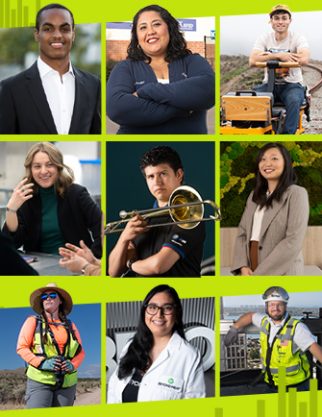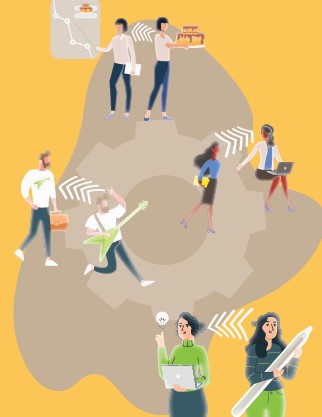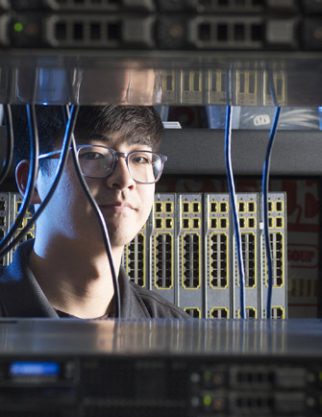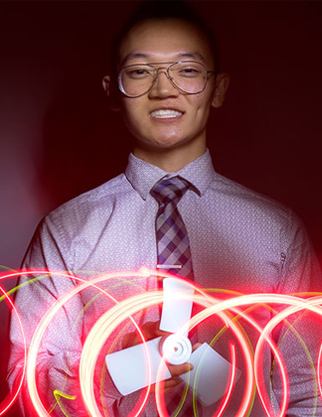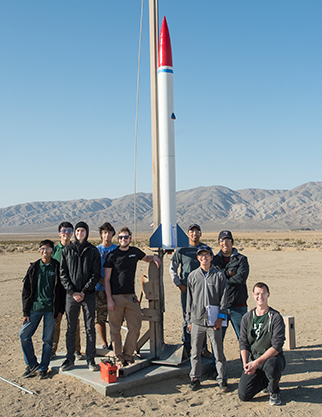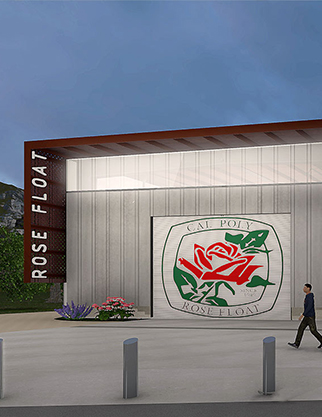In the 1960s, “Star Trek” declared space “the final frontier.” In the decades since the Cold War race to the moon and the Mercury-Gemini-Apollo era, the frontier’s boundaries continued to expand, propelled by discovery and innovation.
Cal Poly Pomona students and alumni have been part of that journey.
Brian Robles, a graduating senior in mechanical engineering, is part of the university’s Liquid Rocket Lab. His engineering chops come through nature and nurture: His father, Thomas Robles, earned his bachelor’s degree from Cal Poly Pomona in 1986, also in mechanical engineering.
The elder Robles has plied his trade at Boeing, Hughes and Rockwell in aerospace and military defense projects.
“There are a lot of engineers in my family,” Brian says, citing uncles and a grandfather in the thermal and chemical fields.
“My grandmother used to work at a thrift shop. She would bring home old, broken electronics,” says the Fullerton resident. “I just took them apart because it was fun, and I liked to make a mess.”
In high school, Brian accompanied his dad to Boeing’s “Take Your Child to Work Day,” where students conducted experiments in a chemistry lab, watched a demonstration of 3D printing and toured the machine shop.
“They had a water-jet machine running,” Thomas, 57, recalls.
Brian notes two other “wow moments” — a visit to the California Science Center and a tour of the Museum of Flight in Seattle.
At Sunny Hills High School in Fullerton, the 22-year-old gravitated toward its STEM program and relished a robotics competition. He knew engineering would be his college and career path.
“I’m the repairman/handyman at the animal hospital my mother works at,” he says. “I fix all the stuff they break.”
It was natural that Brian dived into a hands-on engineering project at Cal Poly Pomona. Last spring, he joined the liquid rocketry program’s engine crew, overseeing structural analysis.
Brian says a highlight of the rocketry program was a team visit to the factory that assembled a key component.
“The injector plate was in a bunch of different pieces, and we got to watch them weld them all together,” he says. “You get to see the stuff you’ve been designing come into reality.”
Three decades ago, Cal Poly Pomona’s learn-by-doing ethos also appealed to Thomas Robles, who worked his way through college as a tool-and-die apprentice at an Anaheim metal shop.
“Cal Poly Pomona has more of the hands-on experience,” Thomas says of his undergraduate education. Two of his engineering professors were particularly influential: Peter Dashner and Douglas Dowell, who retired in 1986.
A few years after graduation, Thomas landed a job with Rockwell. His assignments included modification work on four space shuttles: Columbia, Discovery, Atlantis and Endeavour.
He helped upgrade the shuttles to carry heavier payloads and reach higher orbits, including to the International Space Station. His duties sometimes involved crawling around inside the shuttles — the payload bay, sections of the wings and the area containing the plumbing system.
After Boeing acquired Rockwell and Hughes, Thomas had an array of opportunities at the aerospace giant’s plants in Downey, Seal Beach, Palmdale, El Segundo, Anaheim and Huntington Beach.
At home, Thomas plays not only the role of father but of engineering consultant too.
He’s told Brian that there are plenty of career possibilities that match his educational strengths and interests.
“Mechanical engineering is a very big field. There’s just so many ways you can go with that, and he’s found that he likes to do the analysis,” Thomas says.
Another sage bit of career advice he’s given his son, from one engineer to another: “Try to find a company that will pay for advanced learning. Boeing has a really big program for that,” Thomas says. “The big companies will pay for your master’s or doctorate, if you want to continue on.”
When it comes to Cal Poly Pomona’s Bronco 1, the two will discuss design, feasibility and structural integrity.
“He asked me questions here and there,” Thomas says. “There are tons of people who can design anything. But if you can’t build it, it’s worthless.”
Thomas hopes to trek out to the Mojave Desert to watch the team launch its rocket.
“I sure would love it. I keep poking at him to find out when the first engine firing test is,” the father says.
Meanwhile, father and son chip away at an engineering project of their own — restoring a 1968 Mustang.
Thomas says he’s aiming to make Brian an expert on the classic ride.
“He’s learning everything about it,” Thomas says. “He’s going to know where every nut and bolt is on the car.”
